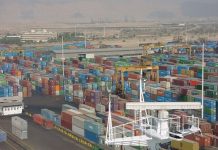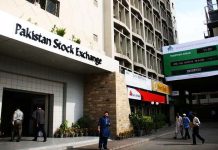ISLAMABAD: Pakistan’s exports rose to $31.1 billion, while imports totalled $53.2 billion during the last fiscal (2023-24), resulting in a trade deficit of $22.1 billion, according to the latest balance of payments statement.
Talking to Media, Director to Secretary of Commerce Fawad Hassan highlighted the importance of enhancing exports due to limited forex reserves. He noted that achieving this goal required diversifying products, adding value, expanding markets, and exploring new opportunities.
Despite the deficit being lower than the previous year’s $24.8 billion, Pakistan’s fragile external finance situation demands further reductions this year to minimize the external financing gap projected to hover around $20 billion.
The forex crisis was so acute that the State Bank of Pakistan’s (SBP) forex reserves first fell from $9.8bn in FY22 to $4.4bn in FY23 and rose gradually to about $9.4bn at the end of FY24 only after China, the United Arab Emirates (UAE), and Saudi Arabia rolled over billions of dollars of funds they had placed with the SBP.
Considering the low level of forex reserves, the need to boost exports has become obvious. However, that is not possible without product diversification, more value-addition, further penetration into the existing export markets, and active exploration of new markets.
Moreover, goods imports remained relatively low ($53.1 billion in FY24 and $52.7 billion in FY23, significantly lower than $71.5 billion in FY22) due to the stringent tariff and non-tariff measures. During this period, the IMF advised easing import restrictions but allowed leniency considering the forex crisis.
Talking to Media, Shakeel Ahmed Mangnejo, Special Secretary at the Ministry of Commerce, highlighted that Pakistan’s export market was hindered by strained relations with Afghanistan and political instability in Bangladesh. Additionally, fluctuating dynamics between the US and Europe have added complexity.
“In addition, Pakistani exporters are struggling to meet the high standards of the US and European buyers while staying competitive amid the rising energy costs, wages, and production expenses. Simply reducing interest rates will not resolve these challenges,” he pointed out.
The second phase of the China-Pakistan Economic Corridor (CPEC) presents a promising opportunity for Pakistan. Enhanced exports to China, coupled with lower trading costs, could bolster Pakistan’s trade balance.
Additionally, the potential growth in exports to the GCC region, buoyed by favourable relations with Saudi Arabia and the UAE and a significant Pakistani expatriate community, offers a strategic avenue for economic improvement.
In conclusion, while the reduction in the trade deficit is a step in the right direction, Pakistan must navigate a complex array of internal and external challenges. Strategic focus on export enhancement, market diversification, and diplomatic relations, coupled with a nuanced approach to the economic policy, will be critical in addressing the persistent trade deficit and stabilizing external finances. –INP






